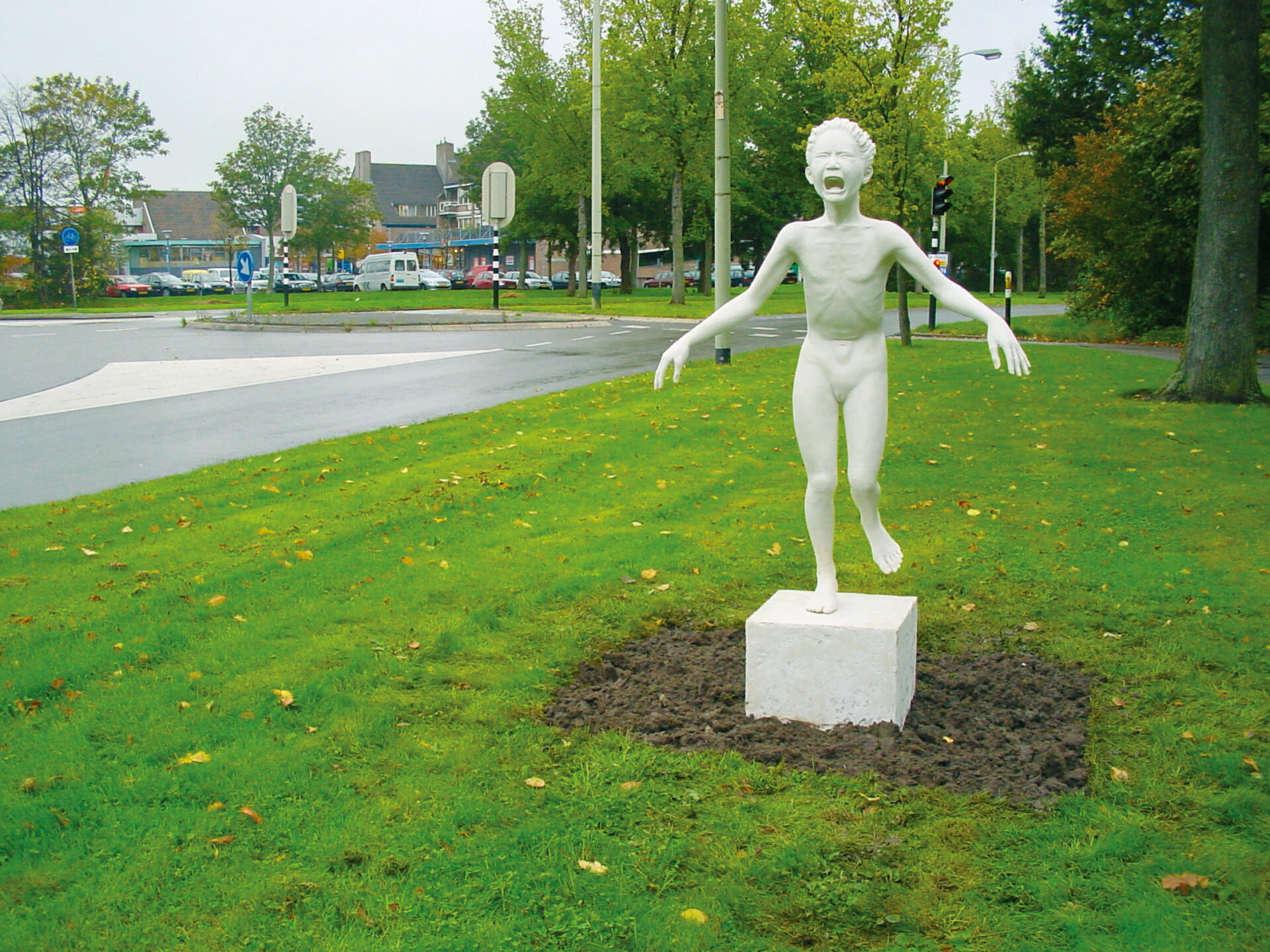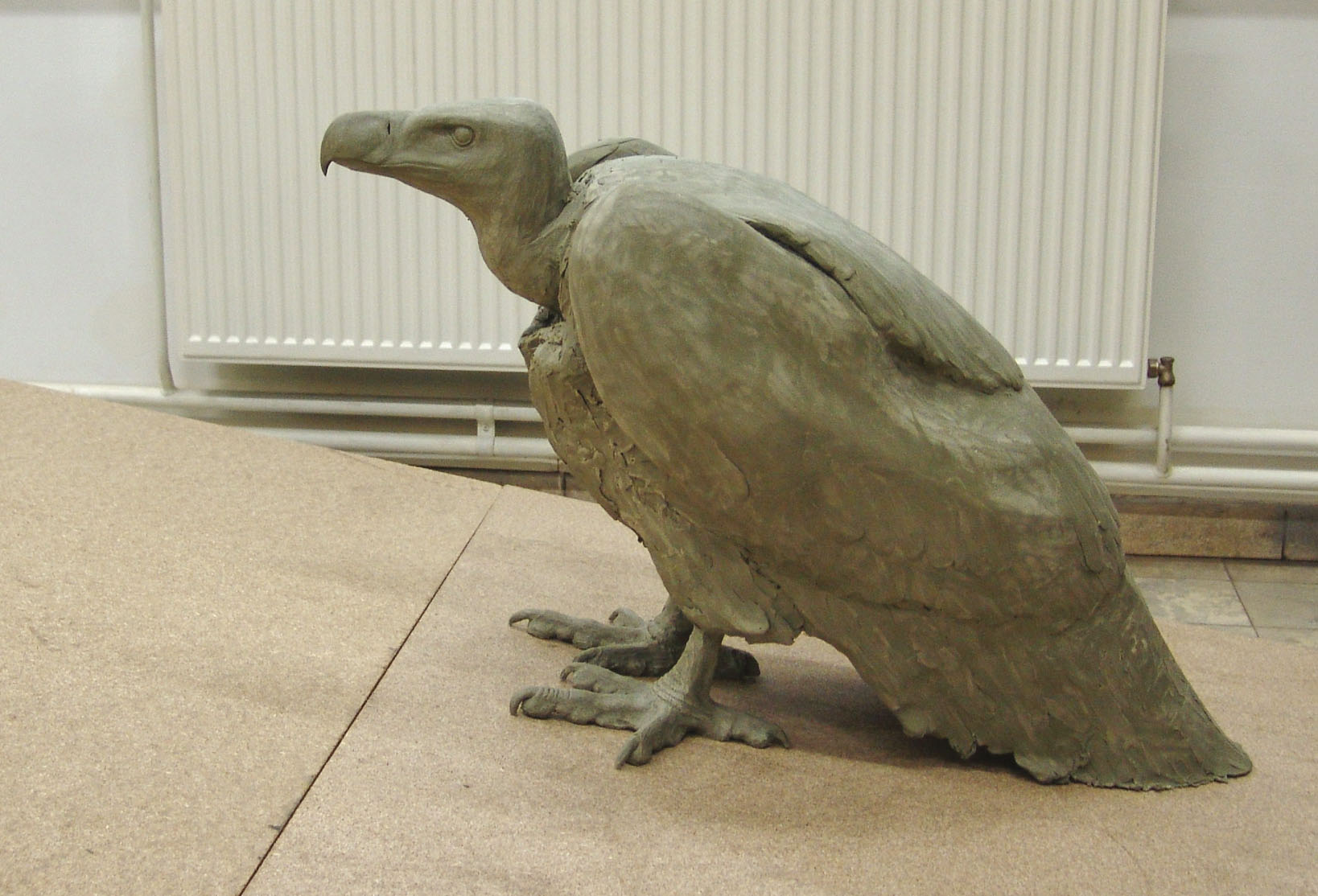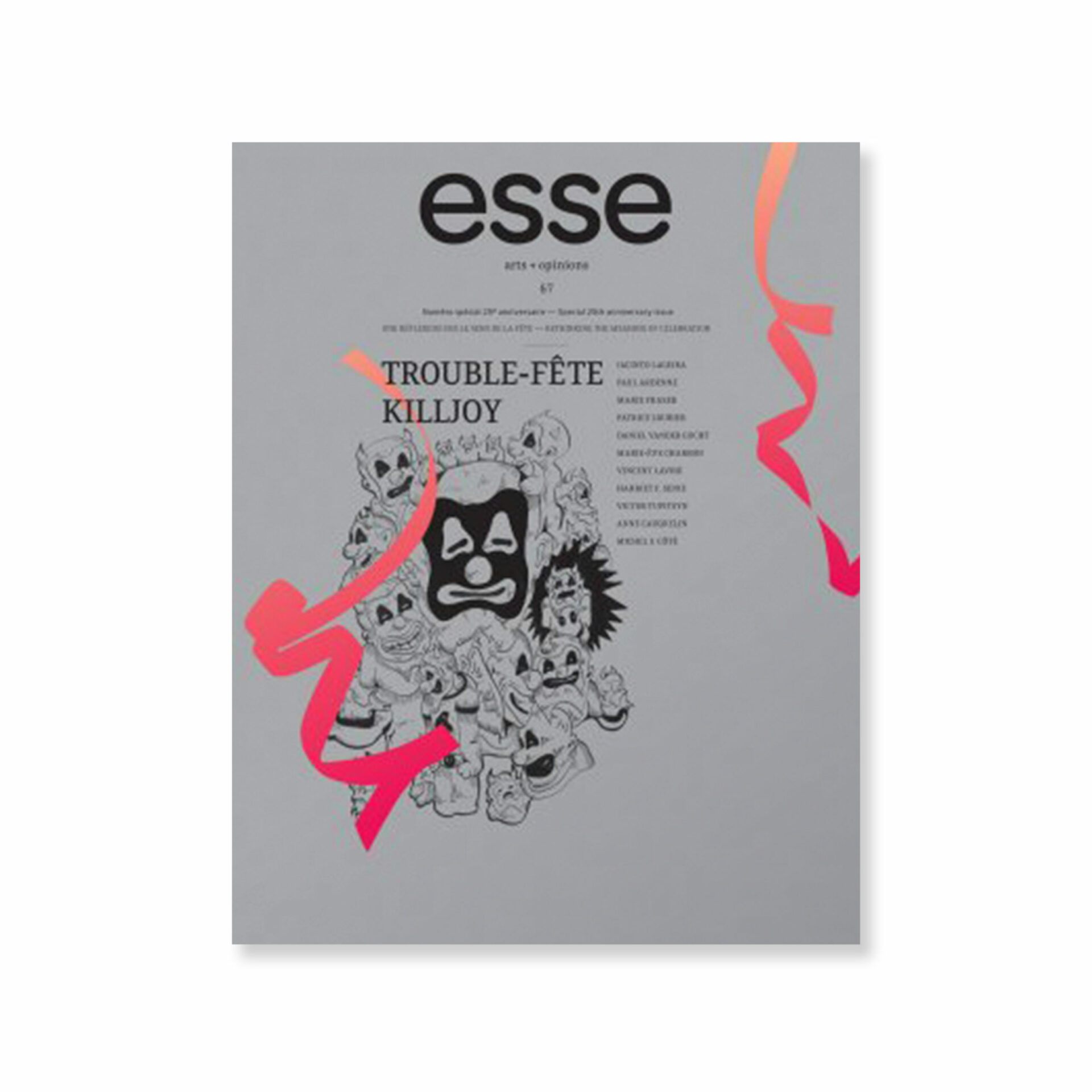
photo : permission de l'artiste | courtesy of the artist
The early 1960s was a time in which the relation between photography and contemporary artistic practice was renewed. Previously limited to particular spheres—illustrated journalism, documentary photography, amateur photography, art photography—photography became the catalyst for a major revision of artistic categories. In particular, photography was integrated into artworks. Such a process of integration first occurred in Pop Art, which exploited the reproducible, ubiquitous, mediatized and vernacular quality of its images. More than the photographic material as such, it is the testimonial, historical and semiotic functions usually associated with photography that are here capitalized upon, such that the new presence of photography in artistic practice is at once material and conceptual.
Thus, media images became part and parcel of artistic practices engaged in a renewal of the representation of contemporary history. By means of these images the art sphere has attempted to rehabilitate the historical genre, which was once suppressed by the avant-gardes, as part of a process of the genre’s critical reassessment. The canonical images of photojournalism—snapshots made iconic through the process of mass mediatization—are revisited. Photojournalism has since become the testing ground for contemporary art’s historiographical ambitions. Consider, for instance, the work of Dutch artist Anno Dijkstra, who creates sculptural reconstructions of figures taken from famous news and media images. Such photos—i.e., the image taken by Nick Ut in Vietnam in 1972 and the one taken by Kevin Carter in Sudan in 1993—have both earned international awards for photojournalism and become monuments of the genre. Photography becomes monumental when it dominates public space (read: media space) by means of a variety of reproductions and transpositions—posters, CD-roms, exhibition prints, postcards, the Web, etc.—thereby endowing the snapshot with a staggering ubiquity. This monumentality of the image is quite peculiar in that it stems from an absence of any designated site. The media image thus becomes a monument without a pedestal, without a place.
Doubtless, it is this unmooring of the image, which Walter Benjamin had already noted in the 1930s, that is here foiled by its materialization in a specific place. For the sculptural reconstitution of a photograph necessarily implies a physical space, be it a public square or an exhibition venue. In the former case, reconstruction submits to the contingency of urban perambulations, while in the latter it proffers itself to the visitor’s reasoning gaze. In either case, the relation between work and place is subject to reformulation, either by erecting the same monument at different places—which restores a form of mobility to the image—or by redistributing elements of the work according to various configurations.1 1 - By dissociating parts of Proposal 14 and arranging them in various patterns, Dijkstra plays on the narrative potentialities of the media images to which his work refers. On the vulture’s presence as a narrative catalyst in the ethical reception of Kevin Carter’s image, see David D. Perlmutter, Photojournalism and Foreign Policy: Icons of Outrage in International Crisis (Westport, Connecticut: Praeger Publishers, 1998), 23–29.

photos : permission de l’artiste | courtesy of the artist
The volumetric transposition of such images is based on a kind of reconstitution that orients analysis towards considerations of intermediality, that is, toward the entangled relationships between the different media involved.2 2 - See Irina O. Rajewsky, “Intermediality, Intertextuality, and Remediation: A Literary Perspective on Intermediality,” Intermédialités 6 (Fall 2005): 43–64. It may also be considered in light of procedures used for the reconstruction of events. Reconstruction is intrinsic to the historical genre in film. As Priska Morrissey states, its principal function is to “enrol the spectator’s adherence to the simulacra.”3 3 - Priska Morrissey, Historiens et cinéastes. Rencontre de deux écritures (Paris: L’Harmattan, 2004), 111. But if history consultants are usually called upon to ensure the credibility of specific scenes—Jacques le Goff for Jean‑Jacques Annaud’s The Name of the Rose, or Arlette Farge for René Allio’s Un médecin des Lumières—such a process has less to do with a search for historical truth than with the reconstruction’s compliance with a fantasized past. If the reconstruction is subordinated to the imperative of realism, the reference model is not so much the real per se as all its combined literary, artistic and documentary representations. Such has been the case since the beginning of cinema. In L’historien et le film, Christian Delage and Vincent Guigueno recall that reconstruction, understood in this sense, is a process specific to the cinematic writing of reality. This holds as much for “documentary” films or cinéma vérité as for so-called fiction films—a distinction Delage and Guigueno in fact reject in as much as all cinematic writing proceeds from a rearrangement of reality. They deliberately focus, then, on the first cinematic recordings of a documentary nature, on the most exemplary instances of that “inaugural urge,” among film pioneers, “to reconstruct both the present and the past.”4 4 - Christian Delage and Vincent Guigueno, L’historien et le film (Paris: Gallimard, 2004), 14.
Whether technical, logistic or temporal, the constraints with which cameramen have to deal with have inspired reconstructive strategies.5 5 - Thus, during the confrontation between the United States and Cuba in 1898, “the cameramen, turned away by American military commanders, were obliged to manage their battle scenes in the outskirts of New York, recreating them with painted canvas, basins of water, and boat models.” Ibid., 17. A more relevant example for our purposes—one that is not mentioned by Delage and Guigueno, though it supports the very tenets of their thesis—is D. W. Griffith’s controversial historical drama The Birth of a Nation (1915). As several commentators have observed, Griffith reconstructed the main events of the American Civil War—Lee’s surrender at Appotomax, the signing of the Emancipation Proclamation, Sherman’s march toward the sea—from photographs of the conflict taken by Matthew Brady and his assistants. From the very beginning of the twentieth century then, event photography has served as a matrix for historical reconstruction.
In archaeology the reconstruction of the past essentially relies on the existence of remains. For anastylosis—a technical term referring to the reconstitution of columns—ruins are itemized with the aim to restore their vertical structure and thus to provide at least an image, be it partial, of the vanished temple. Thus, found or even wholly reconstructed elements may be appended to standing structures in the attempt to solve the puzzle.6 6 - On the fantasies of origin that prevail in archaeological reconstruction, see Philippe Jockey, “De vestige exhumé au passé (re)produit,” Façonner le passé : représentations et cultures de l’histoire (XVIe-XXIe siècles), ed. by Jean-Luc Bonniol and Maryline Crivello (Aix-en-Provence: Publications de l’Université de Provence, 2004), 161–82. Archaeological reconstruction is ultimately an additive operation, which, from several reliable parts, builds up a whole. With Dijkstra, however, reconstruction functions through subtraction. Indeed, the passage from image to sculpture entails a certain loss. It is a negative anastylosis. A distinctive feature of Dijkstra’s work is in fact how it proceeds by way of formal reduction, cutting the press photo down to its main component—a figure of survival,7 7 - On the notion of survival in art history, see Georges Didi-Huberman, L’Image survivante : histoire de l’art et temps des fantômes selon Aby Warburg (Paris: Minuit, 2002). crying out, or lying prostrate, or simply resigned. Thus, the elimination of all contextual elements becomes a metaphor for an omission that is immediately compensated for by a hypostasis of the suffering subject. The latter’s isolation transforms it into an orphan figure of the causes of its own predicament—a dispossession in which its very nudity takes part, stripping it of culture and reducing it to its animal quality.


photos : permission de l’artiste | courtesy of the artist
This type of nudity cannot be identified with the one on which art history has founded its aesthetic norms regarding the representation of passion. The representation of human expressions in art, particularly in the statuary of classical antiquity, has spurred several important aesthetic debates in eighteenth-century art history, then a burgeoning field. The object of choice for such studies on the sculptural representation of passion was the Laocoön, a Greek marble group (in fact, a first-century Roman copy) that represents a passage from Virgil’s Aeneid. In his Reflections on the Imitation of Greek Works in Painting and Sculpture, Winckelmann refers to it as one of the greatest examples of the sublime and austere style.
Lessing discusses it in a book that he in fact titles Laocoön, in which he examines the respective limits of poetry and the visual arts, particularly with respect to the expression of emotions. Lessing’s comments on the pictorial and sculptural representation of suffering are particularly instructive for our purposes: “There are passions and degrees of passion which express themselves in the countenance by the most hideous grimaces, and put the whole frame into such violent postures that all the beautiful lines are lost which define it in a quieter condition. From these, therefore, the ancient artists either abstained wholly or reduced them to lower degrees in which they were capable of a measure of beauty.”8 8 - G. E. Lessing, Laocoön, in J. M. Bernstein, ed., Classic and Romantic German Aesthetics (Cambridge: Cambridge University Press, 2003), 34-35. To which Lessing then adds, “The mere wide opening of the mouth—apart from the fact that the other parts of the face are thereby violently and unpleasantly distorted—is a blot in painting and a fault in sculpture which has the most untoward effect possible.”9 9 - Ibid., 64.
And yet, the photographic representation of human passions, those that photojournalism constantly tracks and reiterates, blatantly violates the aesthetics of restraint advocated by the Laocoön’s commentators. Affective display in photojournalism is all cries and gaping mouths. That Dijkstra chose the wailing figure of little Kim Phuc as a model for his own image says as much about the obsolescence of the aesthetics of calm grandeur as about the need to exhibit its negative corollary. But to what ends? For the survival of what memory do Dijkstra’s monuments strive? What exactly are we celebrating? The image’s newfound grounding? The figured event made sedentary? The embodiment of the figure of suffering? Reinhart Koselleck distinguishes funerary monuments from monuments to the dead by the fact that the latter “serve to commemorate a violent death, caused by the hand of man.”10 10 - Reinhart Koselleck, “Les monuments aux morts, lieux de fondation de l’identité des survivants,” L’expérience de l’histoire (Paris: Hautes Études/Gallimard/Seuil, 1997), 137. While deploring life lost, monuments to the departed—soldiers, victims, heroes, conquerors—strive, first and foremost, to give meaning to survival. The monument to the dead is a memorial to survival. This is particularly evident with certain memorials, like that at the Buchenwald concentration camp (Fritz Cremer, 1958), where the theme of survival, embodied by a gathering of survivors, overshadows that of mass death. Dijkstra’s monuments are not monuments to survival, for they do not communicate any form of hope. Which is not to say that their message is pessimistic. The lack of prospects rests on the impossibility in these works of producing an allegorical representation of suffering that might be free of the contemporaneous. Press photos impose a temporality on the figure that it cannot escape. Imprisoned in the moment, it cries out for eternity. If there is survival to be had here, it is that of the image.
[Translated from the French by Ron Ross]
